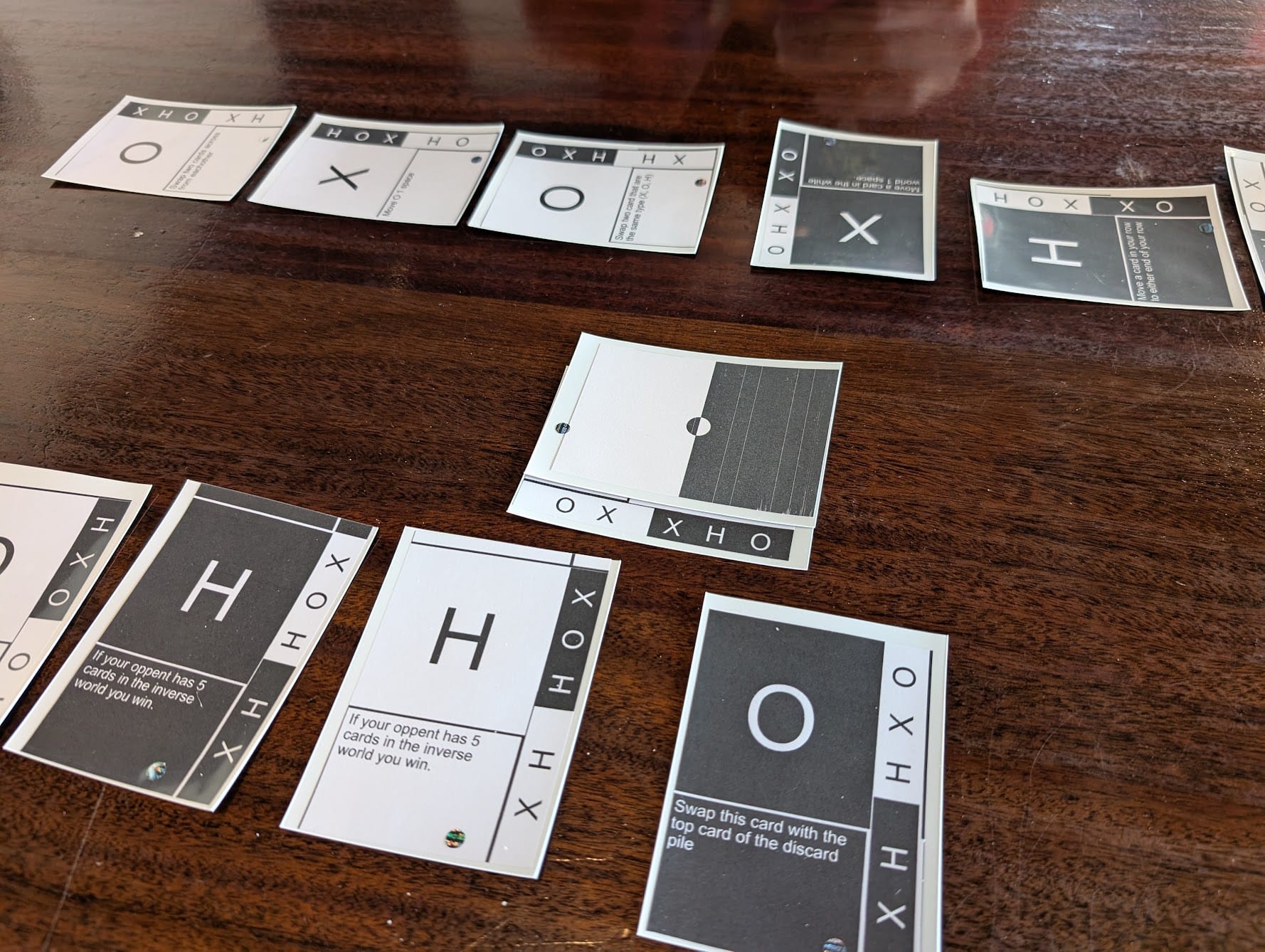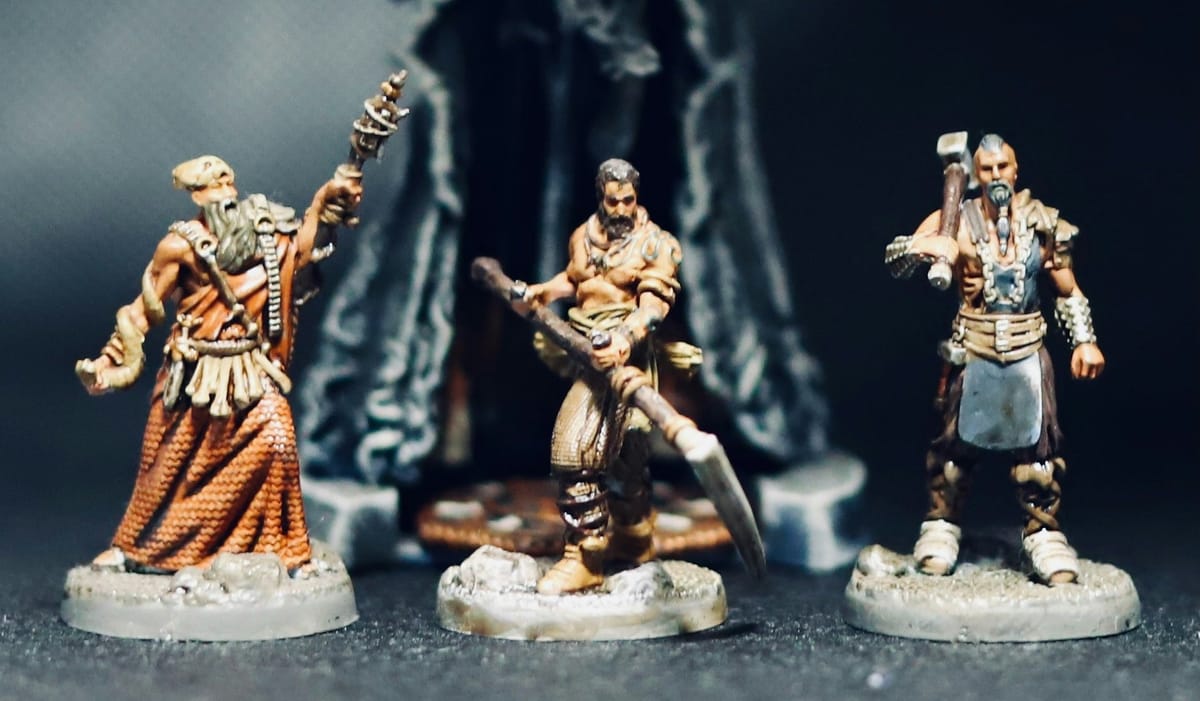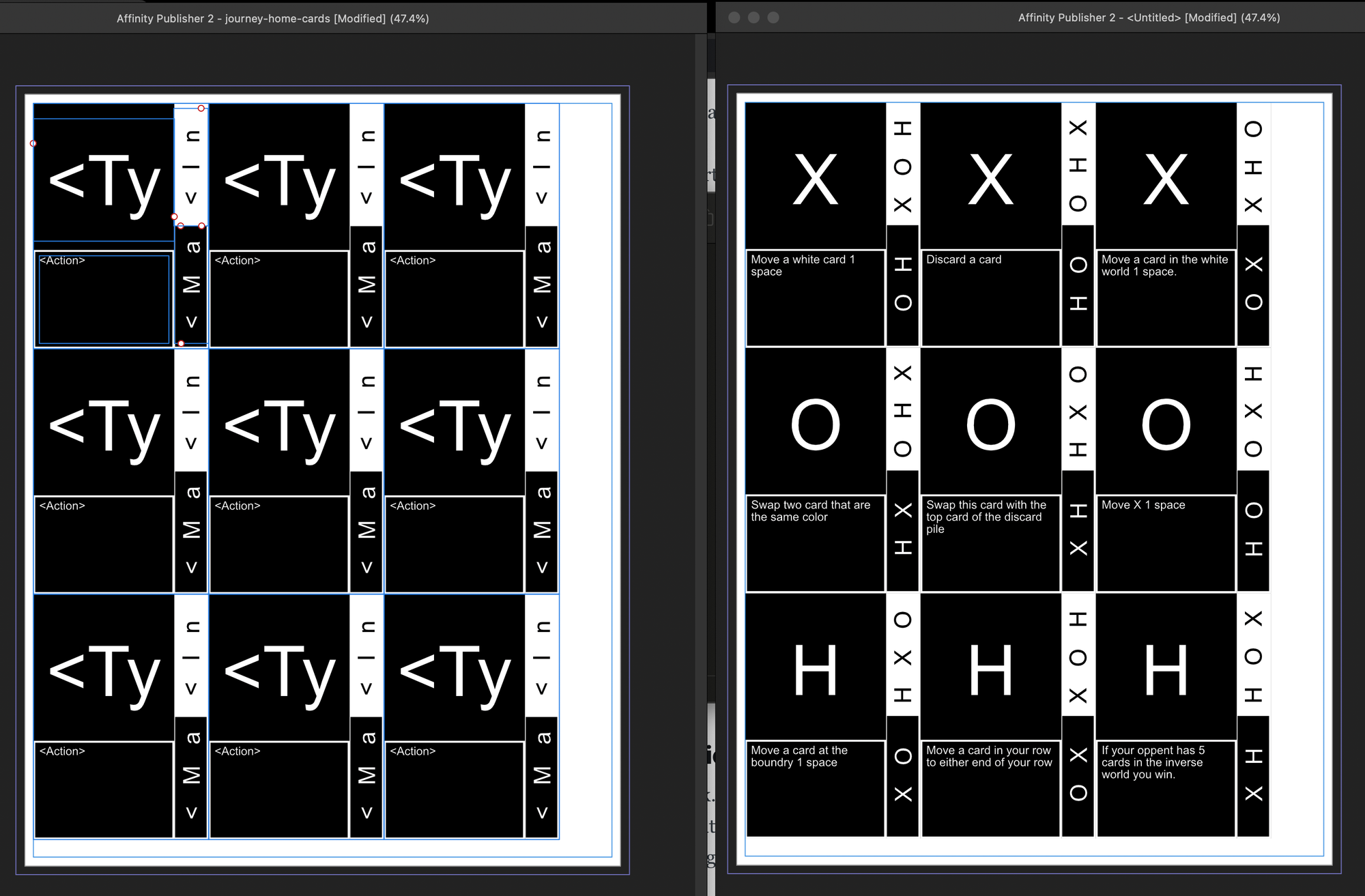Inverse Worlds

Last week, I talked about trying to build a small tableau builder using a limited set of cards.

I started playing with a new theme, one that I thought was both thematically interesting and could lead to compelling gameplay mechanics: inverse worlds.

The core goal remained—align a specific set of five cards in order—but this time, half the cards were black, and half were white. The field was split the same way. Each card had two powers: TRUE and FALSE. A white card played into the black zone triggered its FALSE power, and so on.
It got complicated fast. Cards were either TRUE or FALSE, but also ALIGNED if they matched color. So a TRUE card could target an ALIGNED FALSE card. I'm sure you’re already struggling to follow along. It started to feel like one of those logic problems from math class.
I never actually got that version to the table. It was too confusing. I shelved it for a few weeks—until I started my sabbatical.
Simplify, Cut, and Trim
Last week, I returned to it with fresh eyes and simplified a bunch of things.
The new theme: people trapped in a distorted version of the world. In this inverse space, they gain powers that let them manipulate their surroundings. Their goal is to return to their original world—but when they do, they lose those powers.
Mechanically, the goal is to return cards to their home world in the correct order, but you can only play cards into the opposite world. Players take turns either playing or activating cards. Activated cards are exhausted (turned sideways), and players can take a rest turn to reset them.
I reworked the card actions I had from a previous version of the game, simplifying them. I typically use a spreadsheet which comes in handy for printing cards.

Data Merge, Print, Slice, and Sleeve
The number one tip I always see for designing board games is: get it playable as soon as possible. I have a simple process and a few tools that help me do this for card components. The most important part is data merge.
Although various tools can handle data merge, the most popular is probably Adobe InDesign. I personally use Affinity Publisher because I prefer Affinity’s one-time payment model over Adobe’s subscription. Both have instructions on how to perform a data merge:
First, create a spreadsheet with all the data for your cards—usually with columns like name, text, cost, strength, type, etc. Then create a card template in your tool, follow the instructions above, and finally generate a page of cards. For this design, I got a little fancy and generated one set of white cards and one set of black cards.

The next steps are pretty straightforward: print, cut, and sleeve the cards. I'm using some old Magic: The Gathering sleeves I have. This makes the cards easier to shuffle and play with. If you want, you could even slide in an actual card behind them to make them sturdier.
Cutting
Cutting my prototype cards
Sleeving
Sleeving my prototype cards
Moment of Truth
I finally got to playtest my latest design during a failed ShelfLifeGames pop-up event that my partner and I run. No one showed up, which gave us time to test out my Inverse Worlds game.
Conceptually, the game seemed like it could work, but glaring flaws prevented us from completing it. The key problems were caused by a lack of clarity around specific actions. I never actually sat down and wrote out a clear rule set. There were big gaps—like the inability to discard or remove cards once played. Certain situations became impossible to escape without the right abilities.

My main takeaway: I need to define a clear set of required actions for success, then define how those actions are performed. I need to establish some key verbs: play, discard, move, swap, etc.
Another important realization: the goal requires cards of a specific color (black or white) and in a specific order. My next iteration will not require a specific order, just that cards be returned to the correct "world." My hope is that simplifying the goal and increasing player interaction will make the game more interesting—without relying on the subtlety of finding the exact right card at the exact right moment.

Side Quests
Not sure what kind of progress I’ll have next week. I’ve decided to dive back into video game development and started learning Godot again. That’s where most of my time is going right now, so I don’t have much to report on this or any other board game designs.
Keep an eye out for a potential rebranding of Dewlap Games to also encompass video game development.

